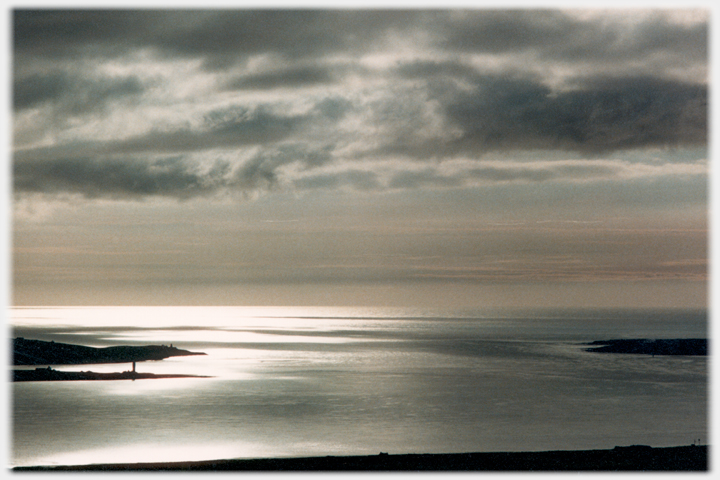
Explanations
To summarise the whole argument: Explanation, to the man in the street, means giving the causes of things and saying why they happen; and he is sure he perceives these eternal lasting things, though he may be mistaken about them on particular occasions.
Kenneth Craik (1943)

We sew our worlds together
to form
 A page introducing Gray's Comparator hypothesis as a modern counterpart to Craik.
a unity, and we use accounts such as explanations to do so. Craik suggests these are typically causal in nature. So we explain that the sea, unlike a river, keeps its place because the world is flat. Etymology concurs with perception:
the horizon
A page introducing Gray's Comparator hypothesis as a modern counterpart to Craik.
a unity, and we use accounts such as explanations to do so. Craik suggests these are typically causal in nature. So we explain that the sea, unlike a river, keeps its place because the world is flat. Etymology concurs with perception:
the horizon
 A key part of understanding explanations is how we come to know that which is new to us.
is horizontal. When we come to sail around our world, or view it
from space,
A key part of understanding explanations is how we come to know that which is new to us.
is horizontal. When we come to sail around our world, or view it
from space,
 Viewpoint is the crucial element here, it is vital to seeing how explanations work.
we adjust our notion and add gravity to it; a concept now considerably revised. In the search for unity, explanations attempt to
stitch together
Viewpoint is the crucial element here, it is vital to seeing how explanations work.
we adjust our notion and add gravity to it; a concept now considerably revised. In the search for unity, explanations attempt to
stitch together
 There are many mechanisms doing this stitching - analogies are especially valuable.
disparate perceptions. Hoy Sound is as flat as the world from space is spherical. The tension here is that the abstract seamstress of thought may try to deny the truth of what we perceive, indeed
some argue
There are many mechanisms doing this stitching - analogies are especially valuable.
disparate perceptions. Hoy Sound is as flat as the world from space is spherical. The tension here is that the abstract seamstress of thought may try to deny the truth of what we perceive, indeed
some argue
 The famous discussion, with Johnson, on kicking the boulder, is part of this debate.
that the unity she achieves, says more about thought, and less about that which is perceived.
The famous discussion, with Johnson, on kicking the boulder, is part of this debate.
that the unity she achieves, says more about thought, and less about that which is perceived.
The quote is from ‘The Nature of Explanation’ which was published by Cambridge University Press and presents an early version of the idea that the mind’s work is to construct a model on which we can try out ideas before committing ourselves to action. The similarity to Gray’s Comparator Model is pivotal. For Craik there is a correspondence between the internal model world and an external world. For Gray there is only one world; the world of consciousness and its sensations. Kant for example proposes that ‘unity’ is imposed by thought (Critique of Pure Reason B 106), and Gray that this unity only occurs at the highest level of neural processing (Consciousness p. 37).
A view of Hoy Sound in Orkney, off the northern coast of Scotland.
Above hovering on blue introduces a link: click to go, move away to stay.

Saturday 22nd February 2020
 ...guide to this site
...guide to this site